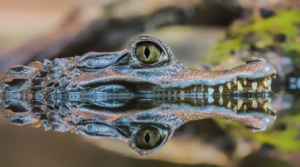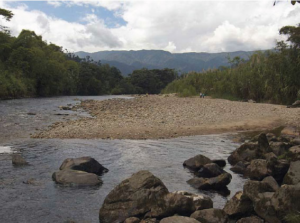Ecuador has beautiful varieties of butterflies. With their whitish, almost transparent wings they flutter among the branches of the trees, others with their iridescent wings fly over the forests. At sunset they appear as owls. Their myriad colors and the mystery that surrounds them make them unique: they are butterflies. Worldwide, these small invertebrates belong to six families and all of them have made Yasuní National Park their home.
The variety of ecosystems and climatic stability are two of the factors that have made Ecuador the country with the largest number of butterfly species in the world. So far, around 24,000 species of butterflies have been described in the world and, of these, 4,000 have been recorded in Ecuador. Although it shares the first place with the two neighboring nations, if you take into account its extension or analyze the number of species per square meter, the country is positioned as the most biodiverse in butterflies on the planet, also where you can observe many butterflies is in the Ecuadorian Amazon, especially in the Yasuni National Park.
One of the places in Ecuador, where you can observe more than a thousand butterflies of different species and of various colors flying around is Mindo because it has a butterfly garden, it is an interactive garden of unique beauty where you can learn about the four stages of the life of a butterfly and you can live a unique experience. The best known butterflies are diurnal butterflies, but most species are nocturnal, these are found in tropical areas of the country as in the cloud forest of Mashpi Lodge, is a natural paradise, hidden in one of the most biodiverse areas on earth.
Butterflies have a great importance in the ecosystem because when they are adults, many species are pollinators, since they feed mainly on the nectar of flowers. Some also feed on fruits. Butterflies also need to feed on minerals that they cannot obtain from fruits and flowers. This is why butterflies are often seen in mud near rivers or on decaying flesh.
Mating in butterflies is not a matter of chance, they only mate with one of their own species, but they prefer them with the brightest colors, because they reflect vigor, competitiveness and longevity. This also indicates their quality and their ability to give nuptial gifts, which serve to live longer and have more offspring. They are capsules with proteins that the male transfers to them during copulation.
Most of the butterflies that exist are of nocturnal habits, since they have a great advantage in moving during the night when predators are much smaller. Diurnal butterflies require the vivid colors to recognize each other and locate their mates, while nocturnal butterflies use more of their sense of smell to detect pheromones.
Their eye types, nocturnal and diurnal butterflies are compound, but they also possess positional eyes that function by obtaining individual images from each eye so that they can reconstruct and brain-match the image. However, moths or nocturnal butterflies have superposition eyes that generate brighter images, useful for seeing more clearly in the dark night.
Some of the most representative butterflies are:
Morpho Peleides
Known as the Andean blue morpho is characterized for being one of the largest butterflies in the world, has a bright blue color on the wings is caused by receiving the sun’s rays that reach their tiny scales that cause it to have its metallic blue on its wings.
Siproeta Epaphus
Known as the page butterfly is characterized by its tomato, black and white wings, this butterfly feeds on nectar from rotten fruit flowers, they adapt very well in captive areas.
Heliconius Sapho
Known as long-winged butterfly, particularly those with black and white colors, these butterflies are typical of the northwestern part of Ecuador. This species flies only in the undergrowth and shady understory, feeding on the flowers of Psiguria warscewiczii, Gurania cocciones.
Heliconius atthis
Heliconius is a genus of lepidopteran insects of the family Nymphalidae. This species of butterflies are only found in western Ecuador, the colors it has are like those of a zebra, the caterpillar feeds on passiflora.
Zeuxippus caligo
Known as owl’s eyes butterfly, they can be found in western Ecuador. They are very active at the beginning and end of the day, and love to eat rotting fruit.
Danaus plexippus
Known as monarch butterfly, it is characterized for being a very small insect that can measure 8 to 10 centimeters, it is very easy to recognize by its bright orange colors on its wings, with black veins and edges decorated by white dots.
Danaus Gilippus
Known as the queen butterfly is a North and South American butterfly of the family Nymphalidae. The queen butterfly lives 4 days as an egg, 2 weeks as a caterpillar, 10 days as a chrysalis and 2 to 6 weeks as an adult or imago.
Marine Leptores
Known as an orange-red or brown web-winged butterfly with a coppery sheen on the upper surface. In female butterflies, small black spots are almost always observed on the face of the butterfly.
Greta Oto
Known as the glass butterfly, they are native to Central and South America, travel at speeds up to 12 kilometers per hour and are stronger than normal butterflies.




